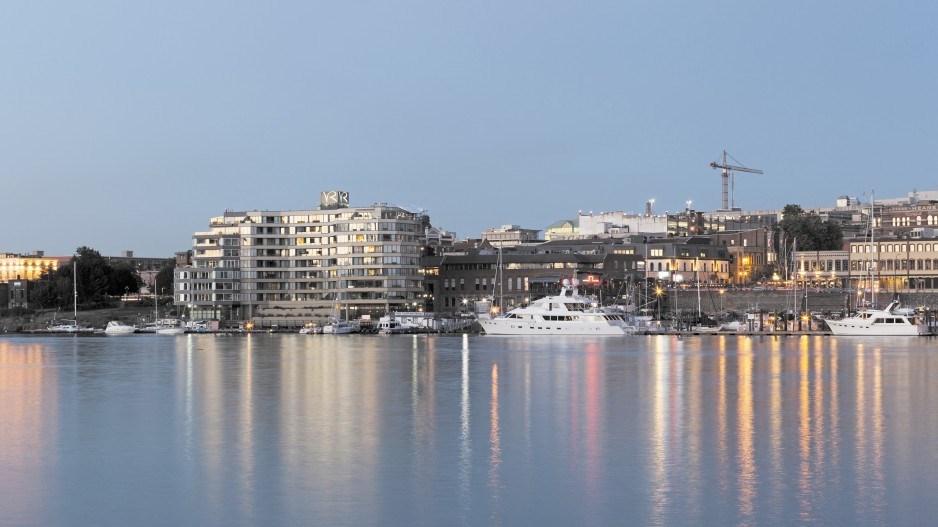The numbers are stark: while benchmark house prices in the Real Estate Board of Greater Vancouver’s area rose 17.8% in 2016 to $897,600, the price of housing sold through the Fraser Valley and Victoria real estate boards increased by more than 20%. Indeed, in the Fraser Valley, long considered the affordable alternative to pricey Vancouver, house prices rose a whopping 27% in 2016 to $628,200, nearly twice the growth logged in 2015.
It isn’t hard to see the reason: as 2016 dawned, article after article chronicled the plight of young families who couldn’t find affordable housing, let alone adequate child care, pulling up stakes in Vancouver for broader pastures.
Some moved to Vancouver Island and smaller communities where a home with a yard was more affordable.
Many others crossed the Port Mann, relocating far enough away from Vancouver to afford housing but close enough to maintain local connections.
BC Stats reports that net intraprovincial migration to the capital region has averaged about 1,500 people in the past five years, but Victoria Real Estate Board surveys indicate that 13% of buyers now come from the Lower Mainland – up from 6% in 2013.
The single biggest increase in net arrivals has been in the Fraser Valley Regional District, which added more than 2,600 people in each of the past two years. This was more than double the average in the previous decade.
While there are worse hardships than moving to Surrey, Langley or Abbotsford – a point Abbotsford made in a video spot last summer promoting its new community plan – many people say it’s a symptom of a larger trend going back to 2006, when the late architect Bing Thom warned that Vancouver risked becoming a resort for the rich.
“It now requires years’ more work to save a down payment on an average-priced home than it did a generation ago, as earnings have fallen and home prices skyrocketed,” said Paul Kershaw, an associate professor in the University of British Columbia’s School of Population and Public Health, best known for his leadership of housing advocacy group Generation Squeeze.
The discontent is provoking calls for a change in housing policy, making younger voters a potent force in the upcoming provincial election.
“This problem is galvanizing many young people to seek change in housing policy,” Kershaw said. “We are looking for evidence of that change in all political party platforms.”
In recent months, the BC Liberals have introduced measures aimed at addressing the concern and mitigating the effects of rising house prices.
In August, the government boosted the property transfer tax on B.C. residential sales worth $2 million and up, as well as on Metro Vancouver purchases by foreign buyers. December brought a program offering loans of up to $37,500 to first-time homebuyers, with no interest or payments required for five years.
Yet house prices barely responded. The benchmark price of housing in Greater Vancouver and the Fraser Valley stood still, with increases in townhouse and apartment prices offsetting declines in detached-home prices. Benchmark prices in Victoria and the rest of Vancouver Island rose 5%.
“Policy changes made by the incumbent government in the last six to eight months are noteworthy, but nowhere near sufficient,” Kershaw noted, trenchantly.
It’s not just academics like Kershaw who are taking note.
In a recent presentation to commercial real estate association NAIOP, Brian Lee Crowley, managing director of the Macdonald-Laurier Institute in Ottawa, argued that high housing prices were at odds with economic growth.
“All of the net job creation in Canada for the last few years has taken place in Vancouver and Toronto,” Crowley said.
“They are precisely the two markets where blue-collar workers and middle-class workers are most likely to find it prohibitively expensive to move, denying both job opportunities and the home ownership that is perhaps the key to durable membership in the middle class.”
Yet workers have few options for well-paying jobs outside the major cities, undermining the growth of these areas.
Yet for the regional centres caught between the big cities and the small towns of the B.C. Interior, there’s a glimmer of hope.
The short-term political impact of rising home prices may be a raft of measures to soothe voters, but Amrit Manhas, CEO of the Nanaimo Economic Development Commission, expects the long-term effects of the affordability crisis will benefit communities currently receiving the housing migrants.
It might not be part of the province’s job plan, but as a new generation seeks affordable housing, it’s bringing fresh talent in search of opportunities to towns in need of revitalization.
The housing shift may seem like a bad-news story for a major city like Vancouver, but Manhas, who was raised in the Lower Mainland, said it may well prove more positive for the province than it seems.
Vancouver, she pointed out, continues to grow. Meanwhile, smaller towns are absorbing the overflow as upward pressure on house prices carries buyers into new territory.
“It’s doing so well it’s spilling over to other regions,” she said of Vancouver’s development.




